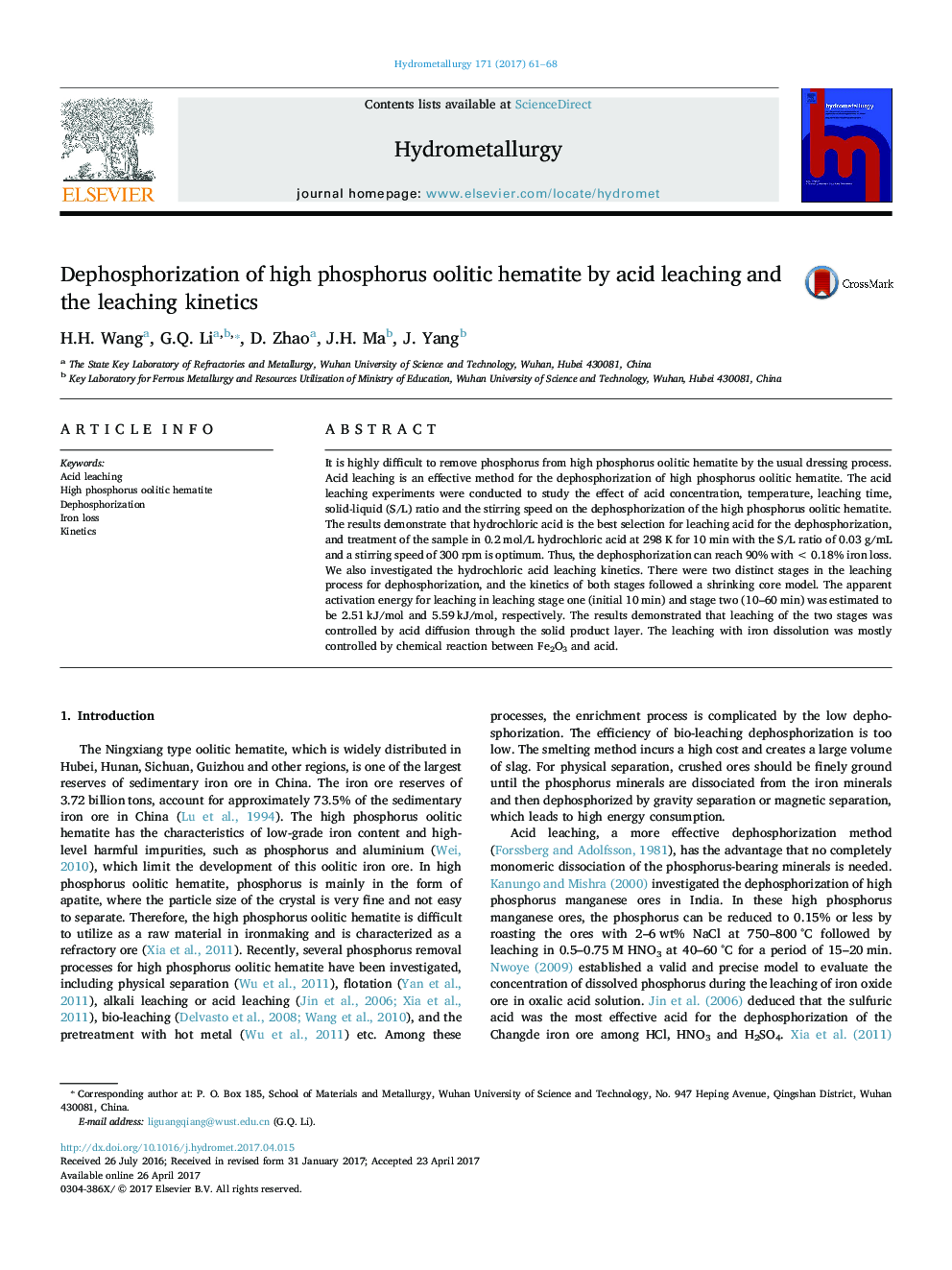| Article ID | Journal | Published Year | Pages | File Type |
|---|---|---|---|---|
| 4769260 | Hydrometallurgy | 2017 | 8 Pages |
Abstract
It is highly difficult to remove phosphorus from high phosphorus oolitic hematite by the usual dressing process. Acid leaching is an effective method for the dephosphorization of high phosphorus oolitic hematite. The acid leaching experiments were conducted to study the effect of acid concentration, temperature, leaching time, solid-liquid (S/L) ratio and the stirring speed on the dephosphorization of the high phosphorus oolitic hematite. The results demonstrate that hydrochloric acid is the best selection for leaching acid for the dephosphorization, and treatment of the sample in 0.2Â mol/L hydrochloric acid at 298Â K for 10Â min with the S/L ratio of 0.03Â g/mL and a stirring speed of 300Â rpm is optimum. Thus, the dephosphorization can reach 90% with <Â 0.18% iron loss. We also investigated the hydrochloric acid leaching kinetics. There were two distinct stages in the leaching process for dephosphorization, and the kinetics of both stages followed a shrinking core model. The apparent activation energy for leaching in leaching stage one (initial 10Â min) and stage two (10-60Â min) was estimated to be 2.51Â kJ/mol and 5.59Â kJ/mol, respectively. The results demonstrated that leaching of the two stages was controlled by acid diffusion through the solid product layer. The leaching with iron dissolution was mostly controlled by chemical reaction between Fe2O3 and acid.
Related Topics
Physical Sciences and Engineering
Chemical Engineering
Chemical Engineering (General)
Authors
H.H. Wang, G.Q. Li, D. Zhao, J.H. Ma, J. Yang,
